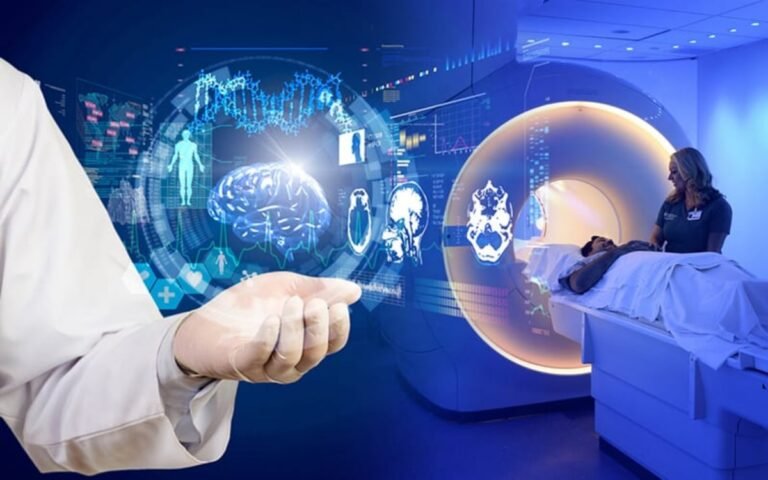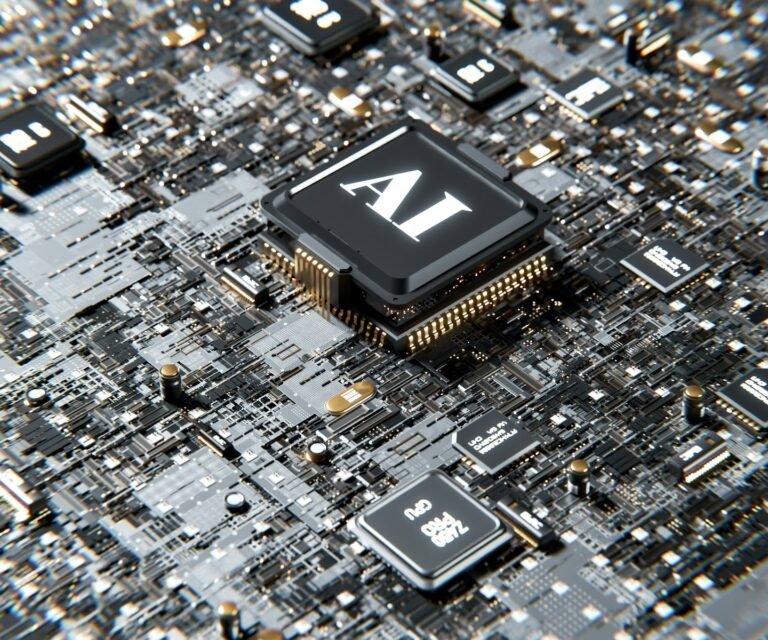Examine the notable developments in radiology, with an emphasis on the fusion of cutting-edge imaging methods and artificial intelligence. This article explores how conventional techniques have changed to enhance patient outcomes and diagnostic precision, including the contribution of technology like 3D imaging, fMRI, and PET scans. We also explore the future of radiology as it becomes a crucial component of individualized medicine, as well as the ethical issues surrounding AI in healthcare.
[ez-toc]
Introduction to Radiology Advancements
As a fundamental component of contemporary medicine, radiology has changed significantly over time, mostly as a result of the development and improvement of several imaging methods. Conventional techniques including computed tomography (CT) scans, magnetic resonance imaging (MRIs), and X-rays have long been essential for identifying a variety of illnesses. Because they can quickly reveal bone fractures and other abnormalities, X-rays are frequently the first-line imaging option. By providing cross-sectional views of the body, CT scans improve this skill and enable a more thorough inspection of soft tissues and organs. MRIs are essential in neurology and orthopedics because of their remarkable contrast resolution, which enables medical practitioners to see complex structures.
However, because of the development of sophisticated imaging technology, the field of radiology is very different today than it was in the past. The capabilities of conventional techniques are expanded by innovations like 3D imaging, functional magnetic resonance imaging (fMRI), and positron emission tomography (PET) scans, all of which help to provide a more thorough insight of patient situations. These developments lead to better patient outcomes by increasing visual accuracy and facilitating early detection and intervention.
Furthermore, artificial intelligence (AI) is becoming a crucial component of the diagnosis process as radiology advances. AI improves the precision and effectiveness of picture interpretation by quickly analyzing large volumes of data. It lowers the possibility of human error, enables the automation of repetitive procedures, and helps radiologists spot patterns that might not be immediately obvious. A new age in diagnostic medicine is being ushered in by the convergence of AI with sophisticated imaging, which has the potential to drastically alter clinical procedures and patient care.
The Role of Artificial Intelligence in Radiology
In radiology, artificial intelligence (AI) is rapidly revolutionizing the discipline by improving the precision and effectiveness of diagnostic procedures. AI helps radiologists with a number of crucial tasks, such as image processing, pattern recognition, and predictive analytics, by utilizing sophisticated algorithms. By enabling faster and more accurate diagnosis, these apps not only optimize workflows but also enhance patient outcomes.
In image analysis, artificial intelligence (AI) systems use deep learning methods to analyze medical pictures, including X-rays, CT scans, and MRIs. Algorithms, for example, can spot minute irregularities that the human eye might miss, improving the likelihood of finding diseases like tumors or fractures. One prominent real-world example is IBM’s Watson, which analyzes radiological images using machine learning models to help physicians make defensible conclusions.
Another crucial application where AI shows great potential is pattern identification. More accurate evaluations can result from training algorithms to identify certain illness trends using large datasets. In some diagnostic domains, such as the identification of breast cancer in mammograms, research has demonstrated that AI can perform better than conventional techniques. This degree of accuracy is essential for prompt treatments, which eventually improve patient care.
The use of AI in radiology presents a number of difficulties in spite of its many benefits. Since AI systems need a lot of data to be trained, concerns about data privacy and patient information security are crucial. Training medical personnel to properly understand AI-generated outcomes also requires a significant financial investment. In therapeutic settings, ensuring human-machine collaboration is crucial to creating an atmosphere where both can flourish.
To sum up, AI is a cooperative partner that improves radiologists’ skills rather than just a tool. Its successful integration portends a new age in radiological practices with greatly increased diagnostic efficiency and accuracy.
Advanced Imaging Techniques Transforming Diagnosis
Advanced imaging technologies have radically changed radiology in recent years, allowing for better treatment outcomes and more precise diagnosis. Methods like 3D imaging, positron emission tomography (PET) scans, and functional magnetic resonance imaging (fMRI) are important for expanding the information that medical practitioners may access.
For instance, functional MRI has revolutionized the assessment of neurologic disorders. In contrast to conventional MRI, fMRI uses blood flow changes to quantify brain activity, giving radiologists a real-time view of neural activity. For the diagnosis and treatment planning of a number of illnesses, including as cancer, stroke, and neurodegenerative disorders, this skill is essential. Targeted therapies are made possible by fMRI’s insights into brain function, which greatly enhance individualized treatment plans.
In radiology, PET scans also provide a distinct viewpoint. This imaging method is very useful for cancer monitoring and detection since it uses radiotracers to highlight bodily metabolic processes. PET scans help oncologists make well-informed clinical decisions by identifying abnormal growths and providing insight into the functioning of tissues and organs. The diagnostic skills of radiologists are greatly improved by their capacity to evaluate both morphological and biochemical alterations.
Furthermore, the visualization of intricate structures has been transformed by 3D imaging technologies. Radiologists are able to evaluate anatomical characteristics with unprecedented clarity by recreating images from various perspectives. This development is particularly helpful in the domains of complex surgery, orthopedic imaging, and dental imaging, where an awareness of spatial linkages is essential for efficient treatment planning.
Additionally, there is a growing trend of incorporating virtual reality (VR) and augmented reality (AR) into imaging techniques. Immersion experiences offered by these technologies improve imaging data interpretation and support surgical procedures. AR and VR allow radiologists to visualize complex information by superimposing 3D models onto real-world photographs, which ultimately improves patient outcomes and increases the effectiveness of diagnostic procedures.
The Future Landscape of Radiology
Looking ahead, the field of radiology is about to undergo a dramatic change due to developments in imaging and artificial intelligence (AI). These developments, especially in the field of customized medicine, are poised to revolutionize not just the diagnosis of illnesses but also the development of treatment regimens. Large volumes of medical imaging data may now be analyzed by AI algorithms with astounding accuracy, enabling the early identification of diseases that could have gone undetected in the past. Proactive intervention techniques and improved patient outcomes are possible outcomes of this change.
According to emerging trends, radiologists will have access to advanced tools that will help them analyze imaging results more quickly, freeing them up to concentrate on challenging situations that call for a high level of skill. A collaborative paradigm between technology and human professionals is emphasized by the incorporation of AI into clinical practice, creating an atmosphere in which radiologists may deliver higher-value care. Crucially, radiologists’ roles will change as a result of these advancements, establishing them as essential members of interdisciplinary healthcare teams that prioritize patient-centered treatment.
But the speed at which these technologies are developing brings up a number of moral issues that demand careful thought. To guarantee that patient care is maintained, concerns about algorithmic bias, data privacy, and the possibility of an excessive dependence on automated systems must be addressed. For radiologists to stay knowledgeable and adjust to these changes, they will need to get continual education and training in AI and imaging technology. The future of radiology will be greatly influenced by its ability to embrace change while upholding ethical norms as the field develops.
A new era of healthcare delivery that places a premium on precision, individualization, and improved patient experiences is anticipated in radiology, which is full of chances for innovation and advancement.












